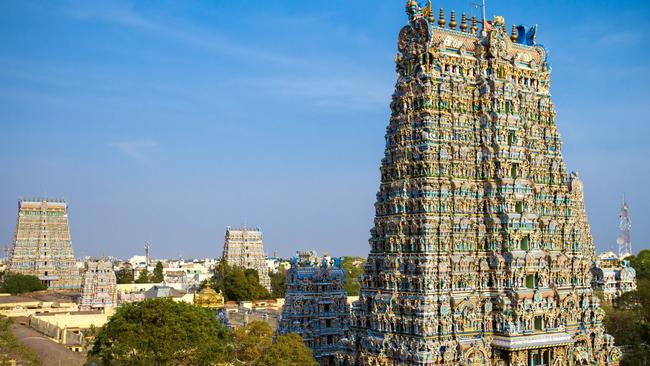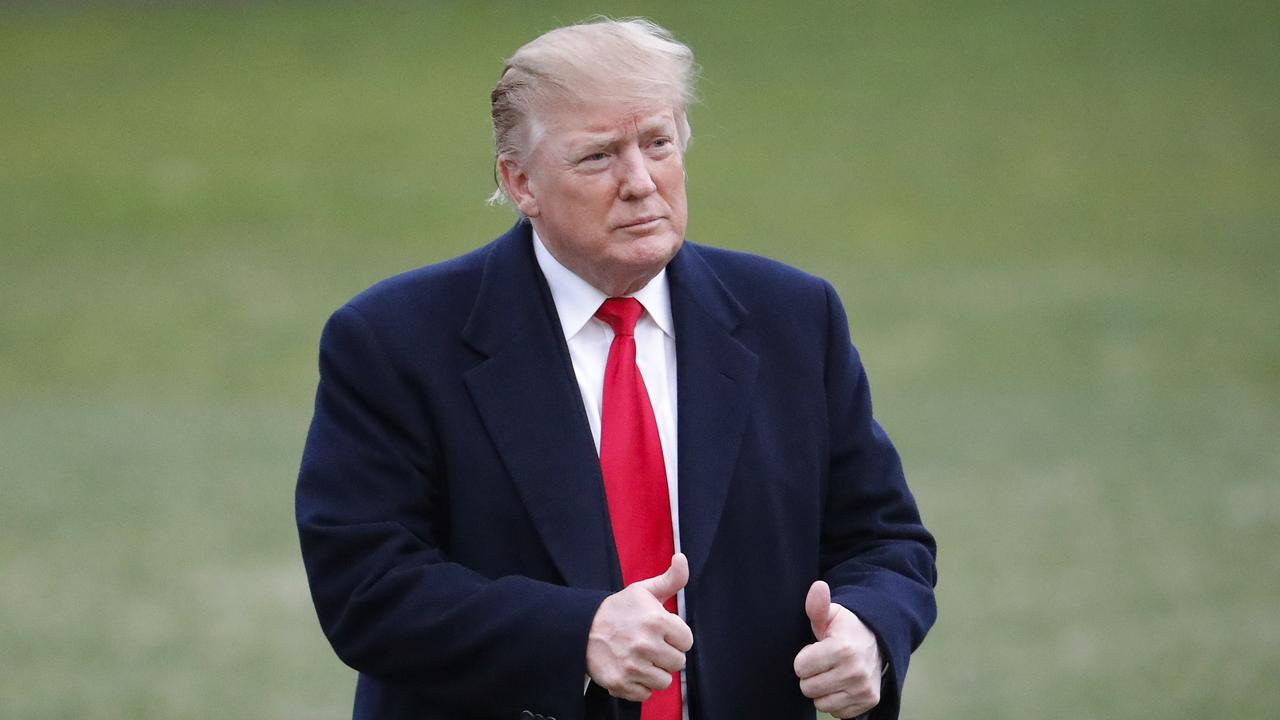NGA Buddha helped expose Nancy Wiener’s art dealing tactics
Nancy Wiener’s facade began to crumble with queries from the NGA.

For five decades Doris and Nancy Wiener were the queens of Manhattan’s Asian art world. First Doris, then her daughter Nancy took it upon themselves to educate US collectors and institutions about the ancient art of the East.
The Wieners placed golden Buddhas from Nepal and Tibet and Hindu deities from the temple-rich Indian state of Tamil Nadu with New York’s Metropolitan Museum of Art, the Los Angeles County Museum of Art, the Art Institute of Chicago and the National Gallery of Australia, to name a few. Doris Wiener counted John D. Rockefeller III, Igor Stravinsky and Jacqueline Kennedy among her clients and she undertook months-long buying trips to India, where she stayed with a notorious supplier, Vaman Ghiya.
This month the family’s blue-chip reputation was shredded when Nancy Wiener was arrested, accused of possessing stolen goods and trading with criminal networks.
Amid the staid respectability of Manhattan’s Upper East Side, Nancy Wiener Gallery has been recast as an alleged clearing house for antiquities looted from significant historical sites of the East. Nancy Wiener’s lawyer Michael McCullough says he had been expecting the charges.
“Ms Wiener surrendered voluntarily to charges related to a March 2016 seizure of objects from her gallery,” he tells The Australian. “Wednesday’s events did not come as a surprise to us and we look forward to responding to the charges at the appropriate time.”
McCullough may well be looking forward to Wiener’s day in court, but it’s a safe bet the 61-year-old, second-generation dealer wishes it would all just go away.
Wiener’s entire working life has revolved around the business, which is busiest each March because of the Asia Week New York annual trade fair. It was during this year’s Asia Week that Homeland Security, as part of its long-running investigation Operation Hidden Idol, raided her premises and seized a 10th-century bronze Buddha from Thailand or Cambodia and two Hindu stone carvings from India or Pakistan worth a combined $US1 million ($1.38m), along with paperwork for them.

The antiquities and their documentation revealed enough about how Wiener did business for detectives to obtain further warrants to raid and seize archives, sales ledgers and emails. This second tranche of material has informed a 12-page charge sheet that connects the Western art world’s most prestigious auction houses, Sotheby’s and Christie’s in New York, with criminal networks plying their trade from Afghanistan to Hong Kong, Thailand to London, and throughout India.
Five distinct criminal networks are identified, including one overseen by Ghiya, the low-profile Indian who supplied hundreds of antiquities to Sotheby’s London auctions through the 1990s, until he was exposed and Sotheby’s moved its Asian art division to its head office in New York, where it was supposed to receive greater scrutiny.
Ghiya was arrested in India in 2003, found guilty of antiquity looting and spent a decade in prison until he was released on appeal. Few if any of the antiquities he spirited out of India have been repatriated.
For the Nancy Wiener Gallery, it is an inglorious fall: it is not listed as a participating gallery in Asia Week 2017.
Even more illustrious than Doris Weiner’s connections with American royalty were those of Nancy Wiener’s father Ed Wiener, a celebrated self-taught jeweller whose bespoke modern brutalist gold, silver and precious stone designs were from the 50s collected by the same calibre of institutions to which the women in his family peddled their wares, among them the Smithsonian.
The action against Nancy Wiener was sparked in November 2014 when a second-century Buddha bought by the gallery and funded by Ros Packer for $1.2m in 2007 for the NGA was revealed by The Australian to have been furnished with bogus paperwork to conceal it had been stolen and shipped illegally from India just a few years earlier.
The Australian fought via Freedom of Information for 18 months for the NGA to reveal from which dealer it had bought the Buddha.
The NGA is supposed to set the best practice standard for the nation’s smaller and less-resourced museums, yet it refused to reveal Wiener’s name or the provenance information she had supplied with the statue, on the grounds potential fraudsters could use the information to exploit the gallery.
Days after Wiener’s name was revealed the NGA was informed by Asian antiquity expert Donald Stadtner that he had been told the Buddha was illegally removed from India. It was about this time Wiener’s world began closing in and she became selective about who she would talk to.
She did not answer emails from The Australian; a man working with her refused to put through calls; and when a reporter acting on behalf of this paper knocked at the door of her Upper East Side gallery, he was not admitted.
After the Buddha expose the Art Gallery of NSW reached out to Wiener about a 1000-year-old carving from Rajasthan of the goddess Durga slaying the buffalo demon Mahisha, which Weiner had sold it in 1999 for $95,000 without any proof of prior ownership. She did not respond.
Wiener did yield, however, to an approach from the NGA when it presented her with Stadtner’s advice that the Buddha was genuine but had been exported illegally and bogus paperwork created to lend it authenticity.
The NGA asked Wiener to honour her money-back guarantee after she failed to produce a valid expert permit and, in an unprecedented arrangement, she agreed to refund the purchase price. The Buddha was slated for return to India. The gallery was careful not to implicate the dealer when it announced the deal but the clock was ticking. A detective close to the case said last week, “She knew it was over.”
Wiener’s charge sheet alleges she acquired the statue from Ghiya. Operation Hidden Idol detectives also have linked Ghiya to another dealer it has been instrumental in tracking down, Subhash Kapoor. He is in prison in India, accused of overseeing three separate idol theft operations. In the US he operated a swanky Manhattan gallery, Art of the Past, not far from Nancy Wiener Gallery, and detectives in 2012 swooped on it and other Kapoor properties, seizing 2600 items worth $US100m.
After the raids they described him as one of the world’s most prolific traffickers of illicit goods.
Canberra’s NGA was also integral to Kapoor’s arrest: a 900-year-old Dancing Shiva he had sold to the gallery for $5.6m was the first item positively identified as having been stolen from a temple in India.
The NGA has since been found to have spent $11m acquiring about two dozen antiquities from Kapoor. So far three have been returned to India. The Dancing Shiva was handed back to Indian Prime Minister Narendra Modi by Tony Abbott in 2014.
Two more antiquities arrived in India last week with the Wiener Buddha and are with the Archeological Survey of India. Indian media reports say the Australian government is unique among repatriating nations in having covered the full cost of all returns.
Kapoor’s former office manager, sister, daughter and girlfriend have all been charged or implicated in Art of the Past.
His brother Ramesh Kapoor founded another Indian and Himalayan art dealership in the same precinct, Kapoor Galleries, which is now managed by Ramesh’s son Suneet Kapoor.
Wiener’s documents reveal what has long been suspected: that dealers of stolen antiquities sometimes launder them through leading auction houses, a practice where they consign and then reacquire them to give the impression they’ve come from a prestigious collection. Before antiquities arrive in New York, often after having been hidden in containers of handicrafts, they undertake complicated international journeys through intermediary countries designed to hide their true country of origin.
Wiener is accused of using restorers to hide damage done during illegal excavations. Emails in her archives reveal she asked restorers to clean, put back together and mount antiquities for presentation to the market. A Baphuon Shiva from Cambodia consigned to Sotheby’s in 2011 was noted by an employee to have had “cracks and joins dressed up with paint splatters to mask repairs”.
When pieces are fresh from temples or digs they often have telltale dirt and other marks on them and they are often deliberately broken into numerous “orphan” pieces for ease of smuggling.
Before they are furnished with a bogus collecting history and presented to buyers they need to be freshly mounted and have recent excavation marks concealed, but also expertly made to look like they’ve been in collections for many decades.
When Doris Wiener died in April 2011, aged 88, Nancy Wiener sold 380 lots of Asian antiquities through Christie’s as the Doris Weiner Collection. She chose Christie’s over Sotheby’s because it had looser rules regarding country-of-origin documentation.
Christie’s requested provenance information for only the 20 most expensive lots, then sold them despite no actual evidence of prior ownership being supplied. The collection raised $US12.8m in March 2012.
Following Wiener’s arrest, Homeland Security has been contacted by numerous US art museums panicked about having acquired items from her.
AGNSW this year tried to contact Wiener again, without luck, about its Durga. The gallery received no provenance documents, nor a money-back warranty, when it bought the statue.
The NGA’s swift and firm negotiations with Wiener, overseen by the then new director, Gerard Vaughan, achieved a positive outcome. Vaughan says the NGA continues to work closely with Indian authorities on provenance.
The NGA’s Buddha is known to have come from the ancient city of Mathura, located between New Delhi and Agra, but its precise place of origin may remain a mystery forever.
AGNSW’s failure to undertake initial due diligence and then to aggressively pursue the dealer when suspicions were first aroused mean it will line up for compensation with Wiener’s other clients.



To join the conversation, please log in. Don't have an account? Register
Join the conversation, you are commenting as Logout